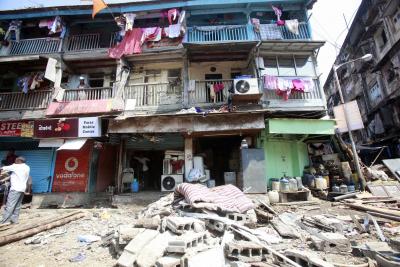Covid-19: US study red-flags red-light areas of Maha, WB, Delhi
By IANS | Published: June 29, 2020 05:38 PM2020-06-29T17:38:32+5:302020-06-29T18:08:14+5:30
A new study by academics from two leading US universities have called for shutting red-light areas to save thousands ...

Covid-19: US study red-flags red-light areas of Maha, WB, Delhi
A new study by academics from two leading US universities have called for shutting red-light areas to save thousands of sex workers from the scourge of Covid-19.
The study by a coalition of experts from Harvard Medical School and Yale School of Medicine has warned of a staggering 400,000-plus infections and over 12,000 deaths among red-light area workers and residents in a year if these red-light districts are reopened.
It has cautioned that India would require 70 per cent more hospital beds by the time the pandemic peaks if red-light areas are reopened, push India over the peak medical capacity faster. Fewer sick people would then be able to receive treatment, causing an increase in preventable deaths.
It said that Maharashtra could be among the worst-affected states, and that Pune's Budhwar Peth would see nearly 4,800 cases, around 700 admitted to hospitals and over 160 deaths.
Similarly, Mumbai's notorious Kamathipura, Grant Road and Falkland Street could see nearly 3,500 cases, almost 500 hospitalisations, and more than 110 deaths.
Next would be Nagpur's Itwari Chowk with over 1,600 cases, more than 235 in hospitals, and more than 55 deaths.
This would take the state's total to over 9,900 cases, more than 1,400 hospitalisations and 325-plus fatalities.
New Delhi's GB Road red-light area would also be at a high risk, with over 2,700 cases, more than 385 cases in hospitals, and 90-plus deaths.
According to the study, West Bengal's red light areas would experience over 2,000 deaths of sex workers and locals if they are reopened.
However, more than 90 per cent of the cases and deaths in cities like Kolkata, Pune and Nagpur could be prevented before the pandemic peaks by shutting down the red-light areas, suggested the study.
Co-authored by Yale University's Dr Abhishek Pandey and Harvard Medical School's Dr Sudhakar Nuti, the study has other interesting revelations to make.
"It is impossible to practice social distancing in red-light areas, and that sex workers, pimps and brothel managers are at higher risk of infection. By keeping red-light areas closed, thousands of deaths among the residents there can be averted," said Pandey.
"The Indian government has implemented smart and effective measures to flatten the curve, but it is unlikely for the pandemic to be resolved until there is a vaccine. It is therefore important that red-light areas remain closed until a vaccine is developed and widely distributed to protect the sex workers and the population at large," averred Nuti.
Durbar Mahila Samanwaya Committee
( With inputs from IANS )
Open in app